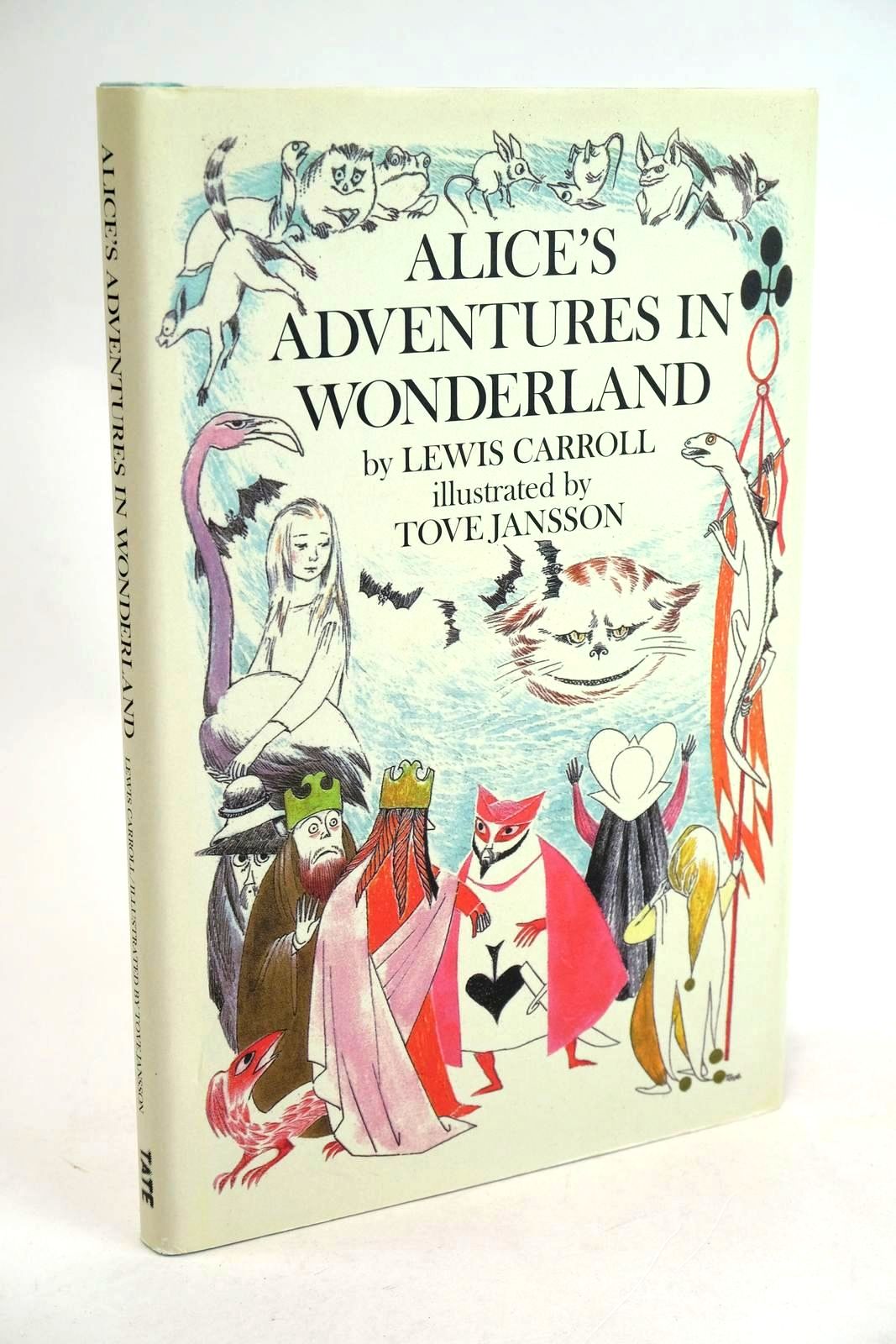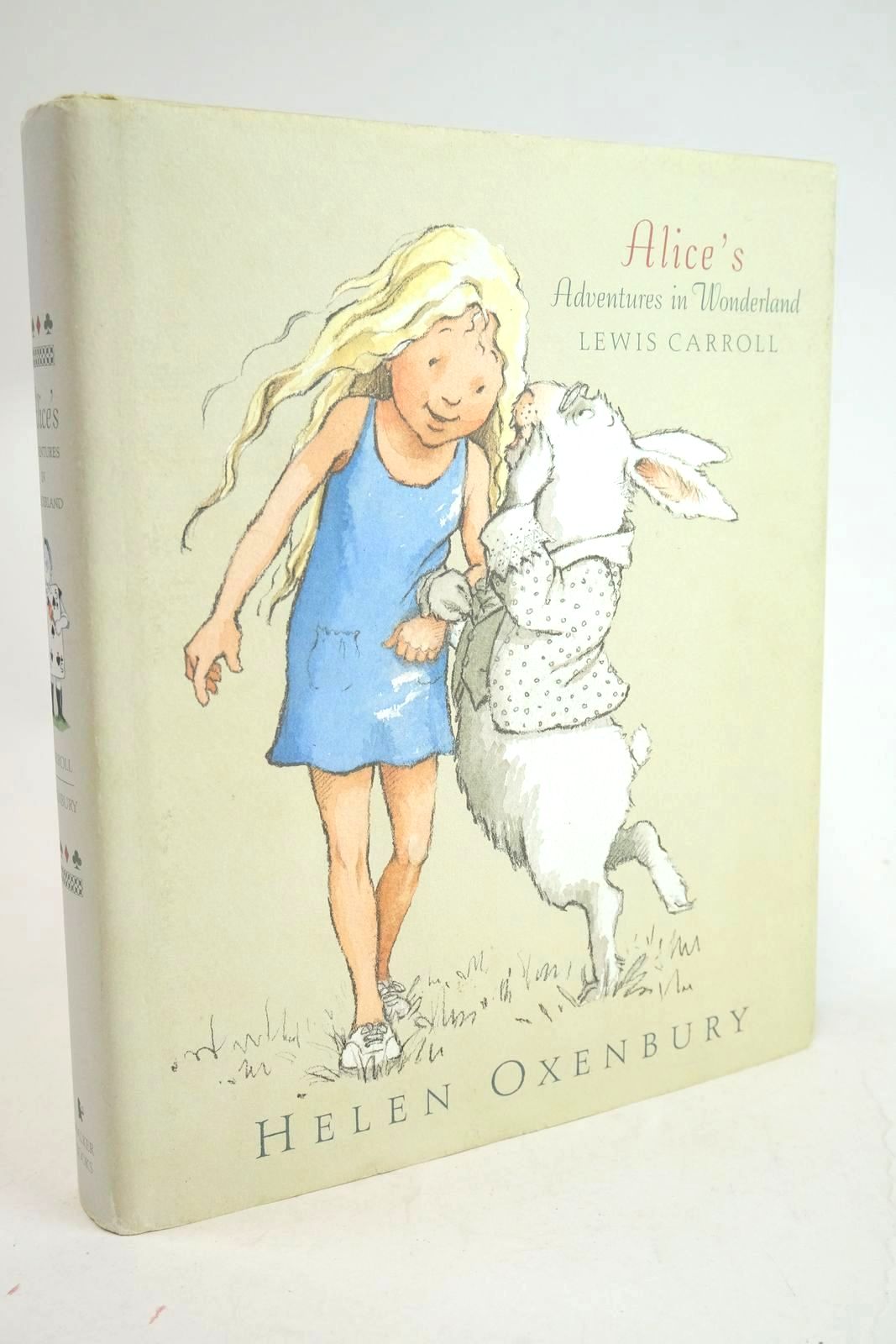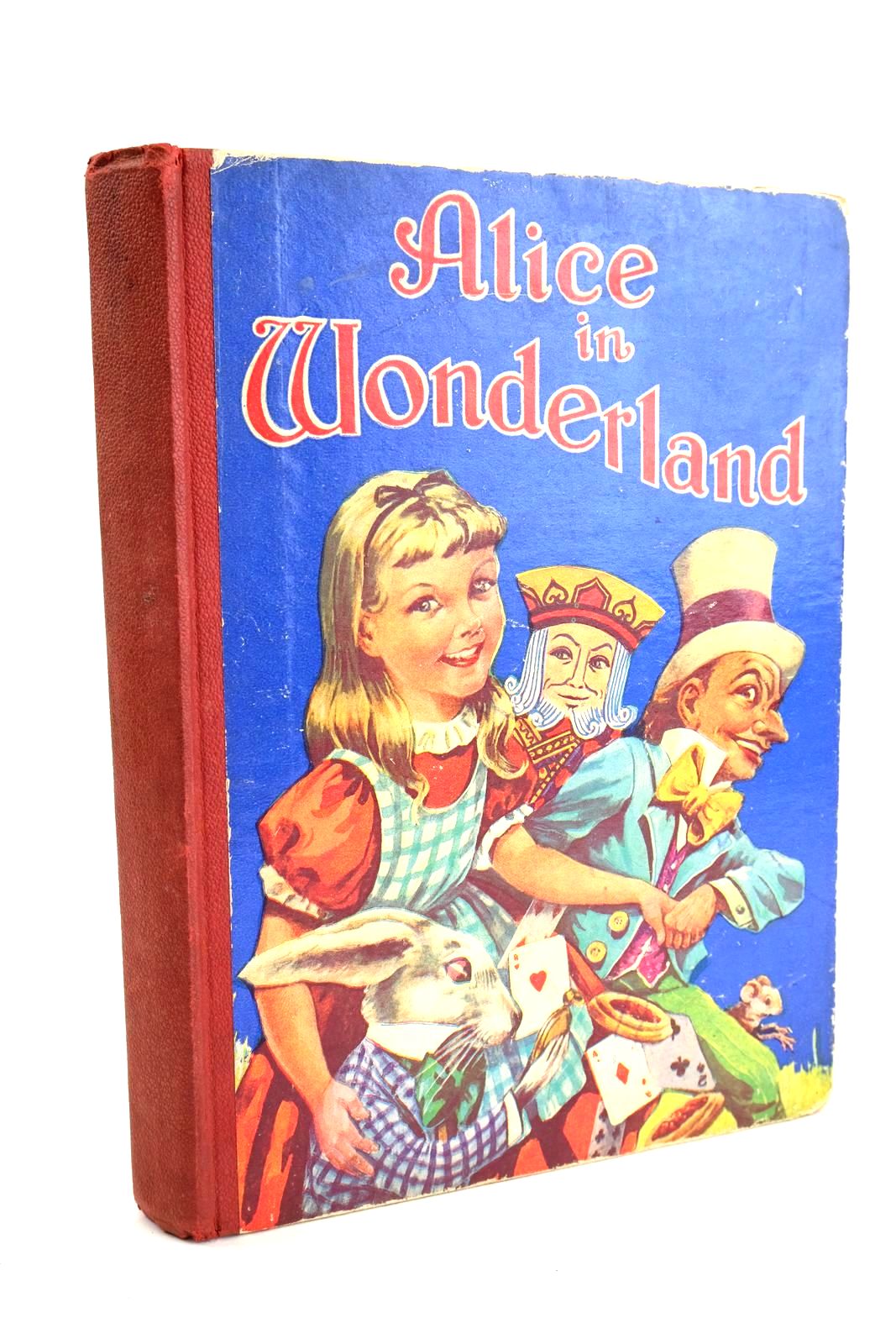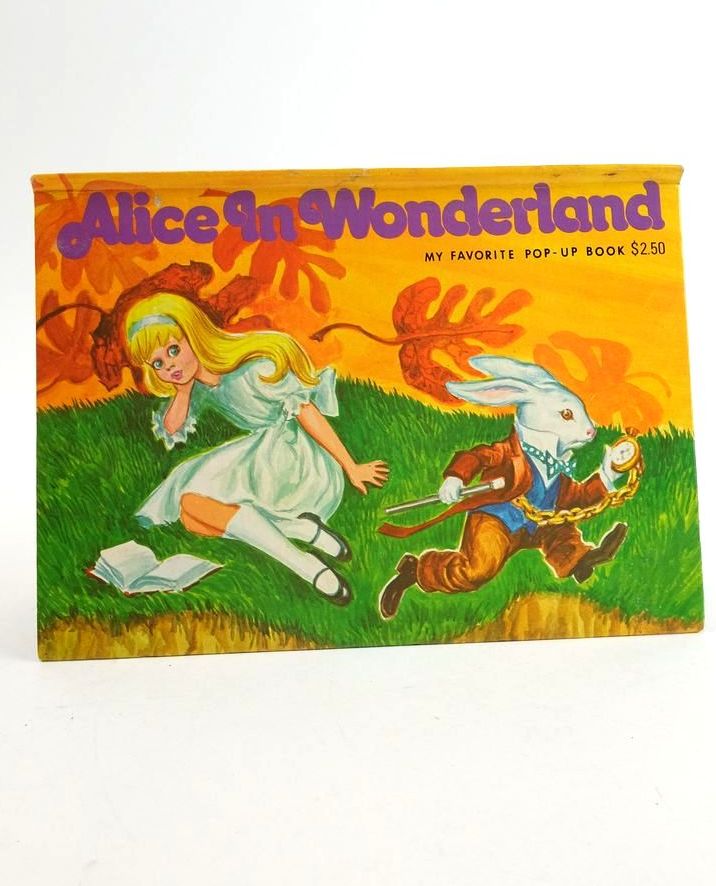Alice's Adventures In Wonderland by Lewis Carroll
Scavenger hunt question (clue - you may be able to find this item in your house).
'Roses are white, but they should be red,
I'll help you play croquet, unless you me behead.'
Alice's Adventures In Wonderland by Lewis Carroll
Originally titled 'Alice's Adventures Under Ground', the author Lewis Carroll (real name Charles Dodgson) gave the story, in manuscript form with his own accompanying illustrations, as a gift to the young Alice Liddell (The Real Alice). Carroll had invented the story to keep the three Liddell children occupied on a day out rowing up the river to enjoy a picnic. (See Chris's article 'The Real Alice' for more detailed information).
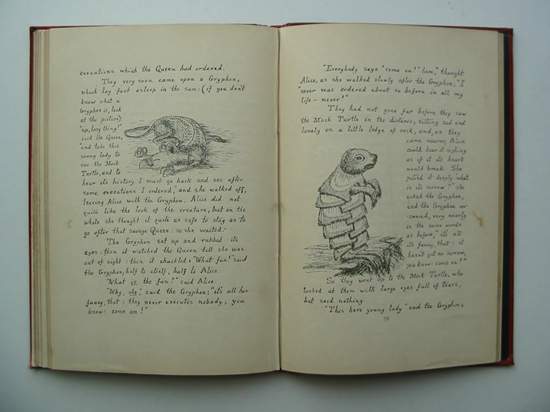
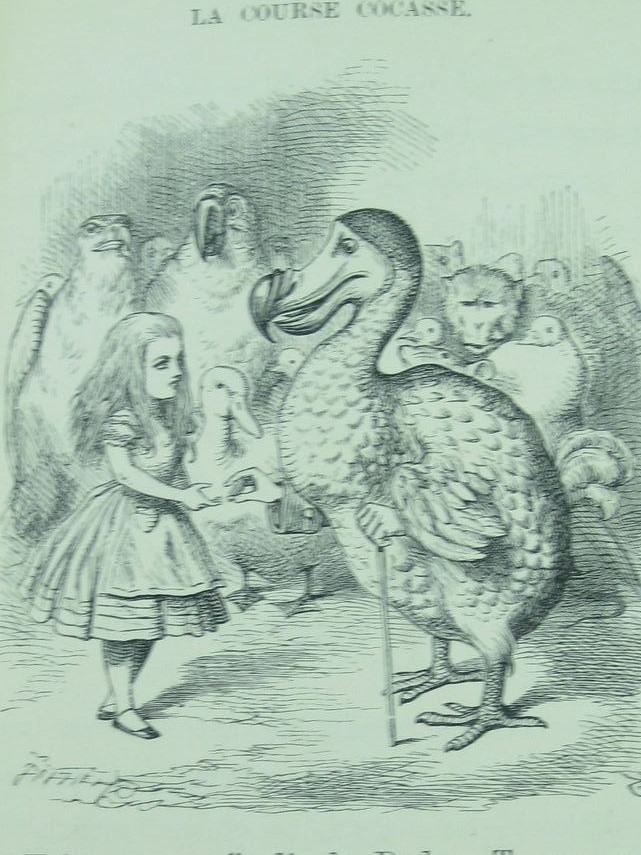
Left: Alice Underground illus. Lewis Carroll; Right: Alice and the Dodo illus. John Tenniel
Carroll, on seeing that the story was well received by the children, continued to embellish and add characters to the original story. The title was amended to 'Alice's Adventures In Wonderland' and, as Carroll had never been happy with his own illustrations, this time it was illustrated by Sir John Tenniel who is probably the best known Alice illustrator of all time. It was published in this form in 1865.
We are introduced to Alice on a hot day (which was starting to make her feel 'very sleepy and stupid'), and she is “starting to get very tired of sitting by her sister on the bank and of having nothing to do”, when “suddenly a White rabbit...ran close by her”. After checking his watch, which he takes “out of its waistcoat-pocket” and muttering about being late, he hurries on. Alice “burning with curiosity” runs across the field after it and is just in time to see him “pop down a large rabbit-hole under the hedge”. Promptly Alice follows down the rabbit-hole after him, “never once considering how in the world she was to get out again”. So begins Alice's Adventures in the fantastical and surreal 'Wonderland'.
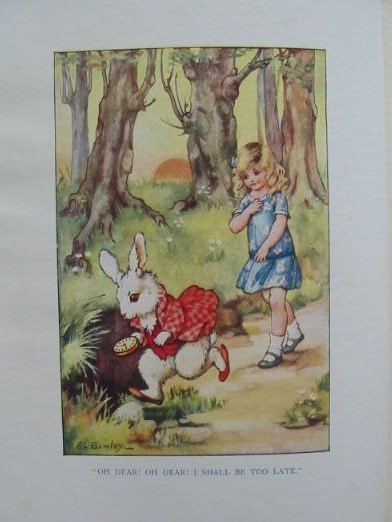
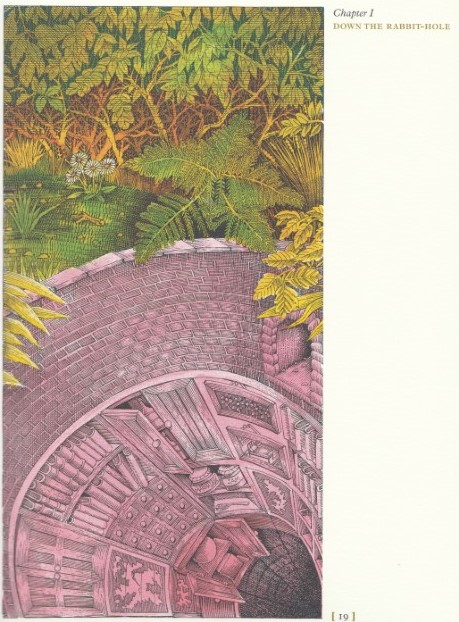
Left: Alice Follows the White Rabbit illus. A.L. Bowley; Right: Down the Rabbit Hole illus. John Vernon Lord
This first chapter is entitled 'Down the Rabbit-hole” and is now often used as an idiom in popular culture, to describe or refer to a situation or a journey that is especially strange, chaotic, surreal, confusing and difficult to escape from. (Or perhaps, as Alice might say, maybe it's just 'nonsense').
After falling down, down, down the rabbit-hole, perusing the items on shelves as she falls and pondering different conundrums “I wonder how many miles I've fallen by this time?” and “do cats eat bats?” suddenly Alice lands “upon a heap of sticks and dry leaves”. Continuing her quest to follow the white rabbit, Alice finds herself in a “long, low hall”, with “doors all round the hall, but they were all locked”. On finding a tiny golden key, she eventually finds, hidden behind a curtain, a little door which the key opens. Through the passage behind the door, Alice can see the “loveliest garden”, which she longs to explore, but she is too big to get through. Here is where the famous bottle marked 'Drink me' and small cake marked 'Eat me' suddenly enter the story. After drinking from the bottle, Alice shrinks, but still cannot get through the door, as she has left the key on the table. Then, on eating the cake, she frustratingly grows too big!
The Pool Of Tears, the next chapter in the story, begins 'Curiouser and Curiouser', as Alice opens out 'like a telescope' as she continues to grow and thinks of the presents she can send her 'poor feet'.

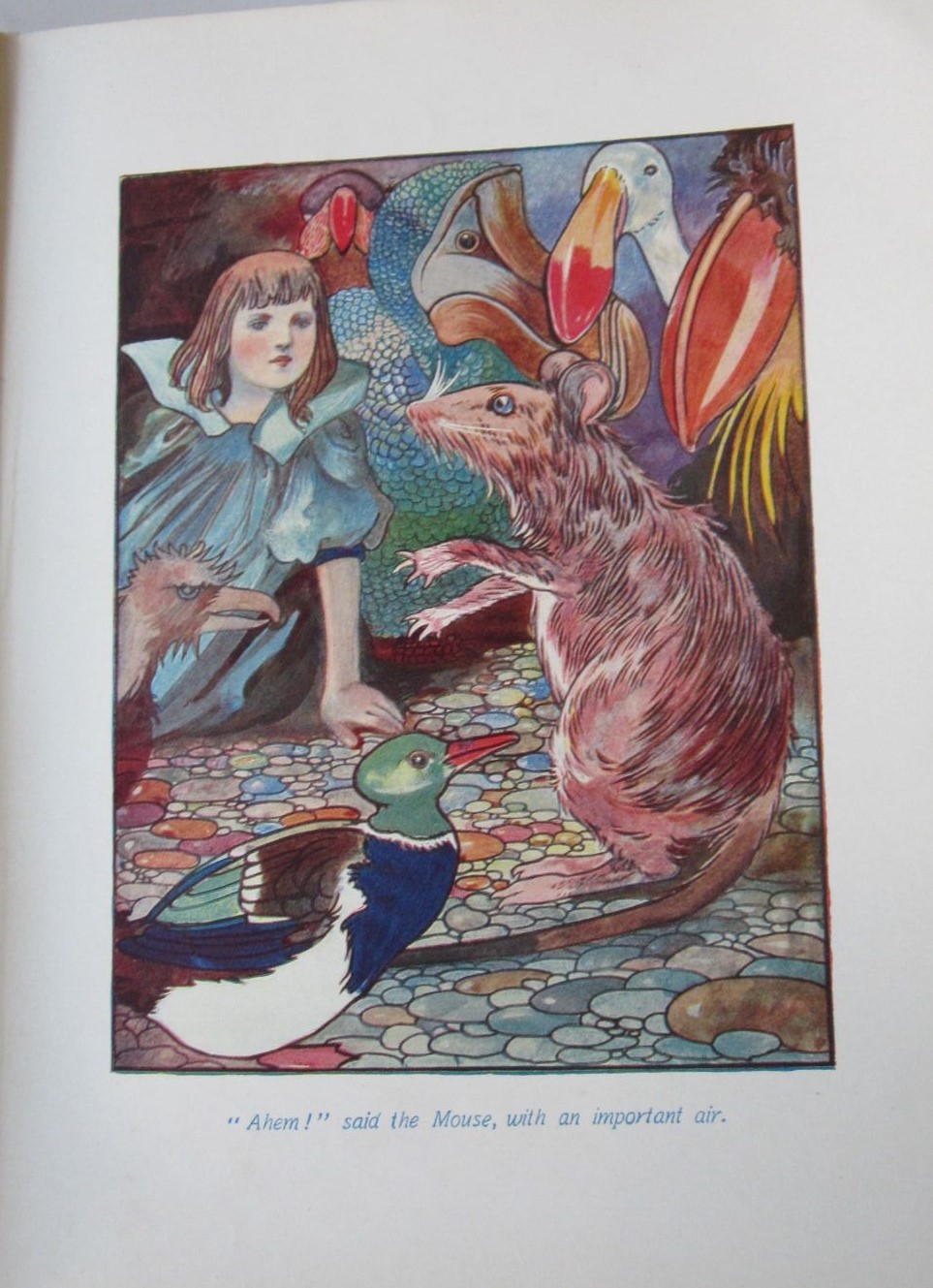
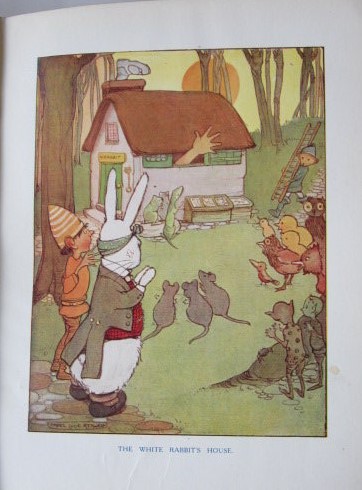
Left: Alice in the Hall illus. Margaret Tarrant; Centre: Mouse Talk illus. Charles Robinson; Right: Alice in the White Rabbit House illus. Mabel Lucie Attwell
When Alice grows so big that her head gets stuck against the roof of the hall, she starts to cry. The White rabbit appears again, dropping a fan and kid gloves, both of which Alice retrieves. As she fans herself, Alice questions herself “I wonder if I've changed in the night?”, “But, if I'm not the same, the next question is 'Who in the world am I? Ah, that's the great puzzle!” As she continues her nonsensical ramblings and cogitations, she realizes that she has once again shrunk and drops the fan “hastily, just in time to save herself from shrinking away altogether”. Alice's tears have created a pool, in which she is swept away with other animals and, of course, they have a conversation about cats and dogs, but also a “Dodo, a Lory and an Eaglet” among other “curious creatures”.
After all the creatures and Alice have swum to shore, the obvious question is how do they all get dry? The mouse embarks on a history of William the Conqueror, whereas the Dodo endorses a 'Caucus-Race', where they all run in circles until they get dry and Alice has to give prizes to all who partook as “Everybody has won, and all must have prizes”. Obligingly, Alice's pockets have enough prizes for all - including a thimble for herself.
The above only briefly covers the first three chapters of 'Alice's Adventures In Wonderland'. The white rabbit keeps popping up throughout the story. Alice even visits his house, where, after more eating and drinking, she shrinks and grows again and ends up filling the White Rabbit's house, just as she did earlier in the hallway.

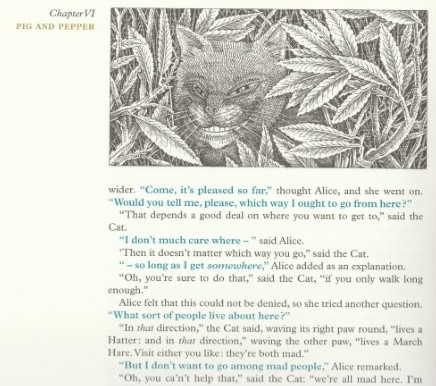

John Vernon Lord Illustrations: Top Left: Advice from a Caterpillar; Top Right: Chessire Cat 1; Bottom: Cheshire Cat 2
Among other notable characters she meets is a Caterpillar (bizarrely smoking a long hookah) with whom she appears to have the most frustrating and contradictory of conversations, in which he advises her to “Keep her temper” and recite 'You Are Old, Father William'. When Alice is let in to see the Duchess, she meets a very well-known character, the Cheshire-Cat, from whom she asks directions, although she doesn't know to where. The Cat gives directions, in probably some of the most famous lines to come out of the story:
“What sort of people live about here?” (asks Alice)
“In that direction”, the cat said, waving its right paw round, “lives a Hatter: and in that direction,” waving the other paw, “lives a March hare. Visit either you like: they're both mad.”
“But I don't want to go among mad people,” Alice remarked.
“Oh, you can't help that,” said the Cat: “we're all mad here. I'm mad. You're mad.”
Some may find the Cheshire-Cat slightly perplexing, with the way he appears and then disappears, only leaving his grin visible. Perhaps this is best reflected in the way we see him through Alice's thoughts:
“Well! I've often seen a cat without a grin” thought Alice; “but a grin without a cat! It's the most curious thing I ever saw in all my life!”
Of course, a visit to Wonderland for Alice would not be complete without 'A Mad Tea-Party', where she joins the March Hare, the Hatter and a Dormouse for tea and riddles, including the Hatter's riddle “Why is a raven like a writing-desk?” It's always “Six O'clock” and “always tea-time” at the March Hare's, in what Alice describes afterwards as “the stupidest tea-party” that she has ever attended in all her life!
On her different adventures through the Wonderland, Alice hears mention of the Queen of Hearts, who is very fond of the phrase “Off with their head!” They finally meet in the chapter 'The Queen's Croquet-Ground”, where Alice finds the three gardeners busily painting white roses with red paint, in fear of the queen as they had mistakenly planted white rose-trees instead of red!
“What's your name, child?” asks the Queen.
“My name is Alice, so please Your Majesty” replies Alice, but added to herself “Why, they're only a pack of playing cards, after all. I needn't be afraid of them!”
Then ensues a frantic game of croquet, on the most “curious croquet-ground” that Alice had ever seen in her life. “It was all ridges and furrows: the croquet-balls were live hedgehogs, and the mallets live flamingos, and the soldiers had to double themselves up and to stand on their hands and feet, to make the arches.” The Cheshire-Cat makes another appearance here to check on how Alice is getting on. “They don't play fairly” is Alice's reply!
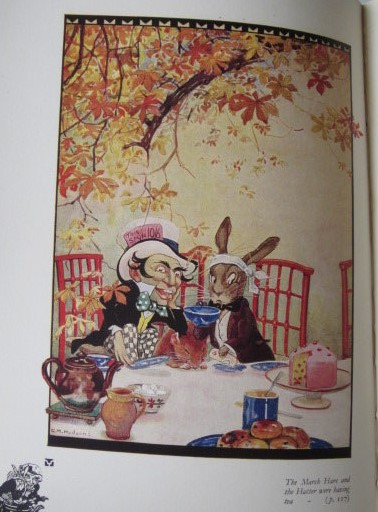
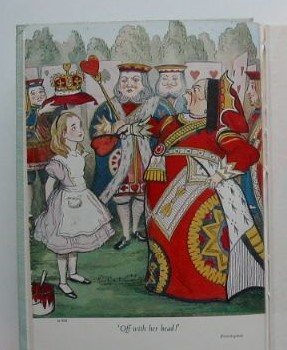
Left: Mad Hatter Tea Party illus. Gwynedd Hudson; Right: Alice Meets the Queen illus. J.S. Goodall
Other stories and adventures include The Mock Turtle's Story and Alice learns all about what a delightful thing a 'Lobster-Quadrille' is! Through many of these chapters, there are some amusing songs and rhymes.
Towards the end of the book, there is uproar when the Queen of Hearts tarts go missing. There is a trial (of sorts), where characters are called on to give evidence, including the Hatter and then eventually Alice herself, who is reluctant to participate. Eventually we come back to Alice on the river bank, where she is sleeping soundly and dreaming, on that hot day with her sister.
On reading 'Alice', some would say it is nonsense, which it probably is! Carroll is very clever in his use of language, rhyme, puns and imagery. You can feel the dreamlike quality of some of the chapters, as they flit from one of Alice's adventures to the next. Just as in a dream, you can be in one place and then immediately be in another, without the need for travel or context. In Carroll's own words “We often dream without the least suspicion of unreality”.
Alice's Adventures In Wonderland has since been published many, many times, with many different artists turning their hand to illustrating the key scenes. (See Chris's article The Illustrators of Alice). In my personal copy, illustrated by John Vernon Lord, he takes a different approach to the illustrating of Alice. With his illustrations, we don't really 'see' Alice, but rather you ARE Alice within the scene, experiencing what she did. Lord gives his reason for this in his introduction: “You rarely see yourself in dreams, indeed you rarely see yourself at all! I wanted Alice to be somewhat disembodied whilst she lies asleep among the field of daisies in the state of a dream.”
Carroll would go on to continue Alice's adventures in 'Through the Looking-glass”, first published in 1871. To make his story accessible to younger readers, the author adapted and shortened the story for children up to five years old, naming it 'The Nursery Alice'. 'The Complete Alice' has also been published, which has each chapter of the Alice books as a separate small book in a box set collection.
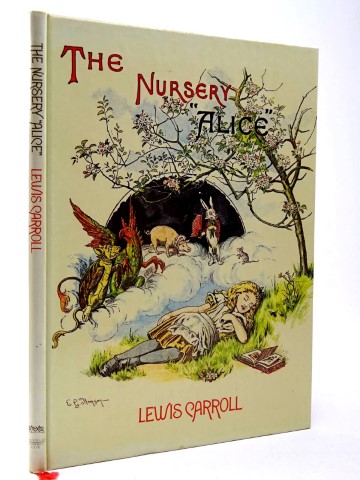
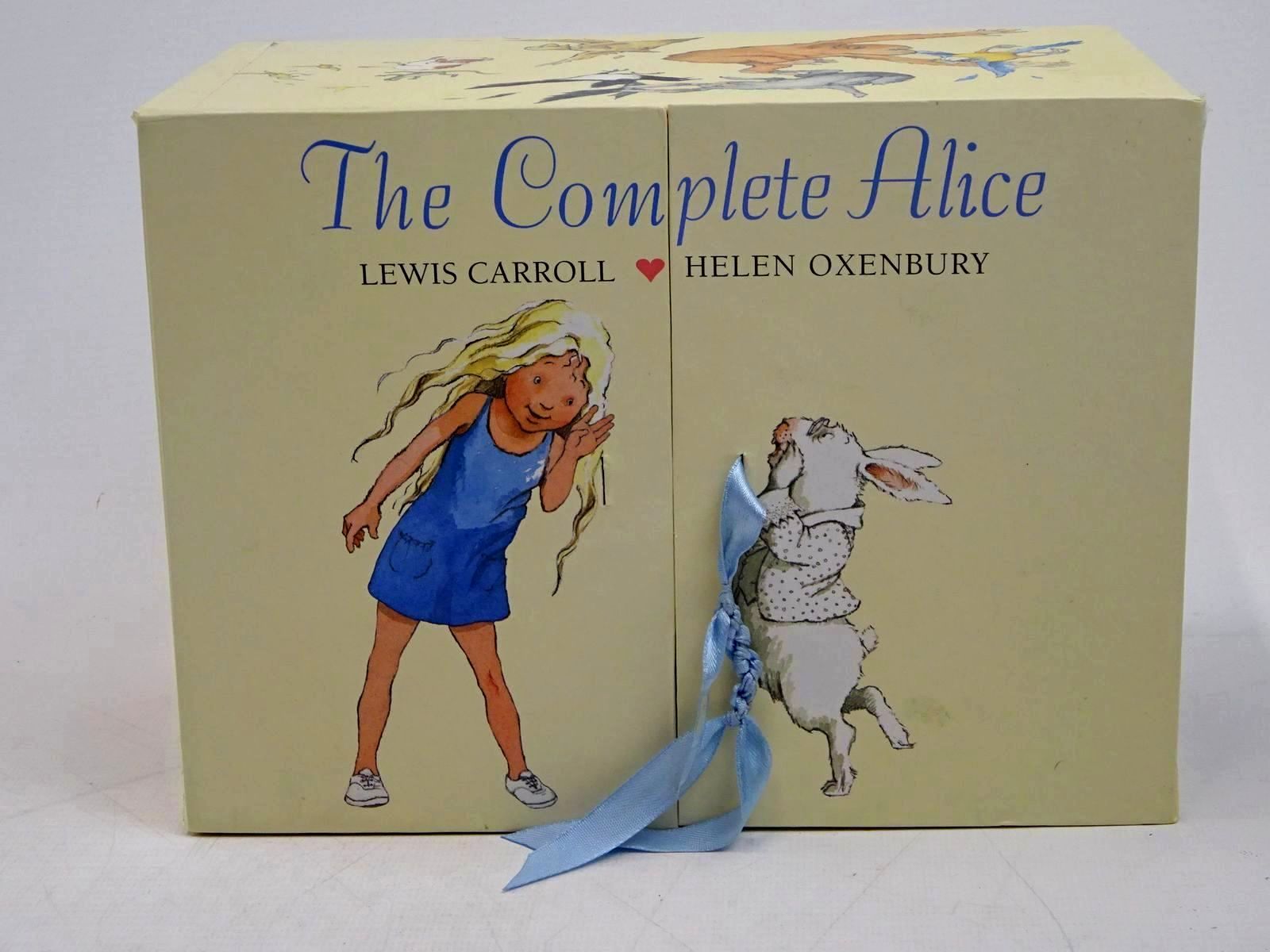
Left: The Nursery Alice illus. Tenniel & Thomson; Right: The Complete Alice illus. Helen Oxenbury
Do you fancy a trip into Wonderland? Please see the current stock of our Alice titles.
Contributed by Joanne
Answer to scavenger hunt question: A Pack of Playing Cards.
Credits:
Alice's Adventures In Wonderland by Lewis Carroll, Illustrated by John Vernon Lord, published by Artists' Choice Editions (2009)
Wikipedia
The Browns (thanks for the scavenger hunt question)
(Published on 7th Jul 2020 )


